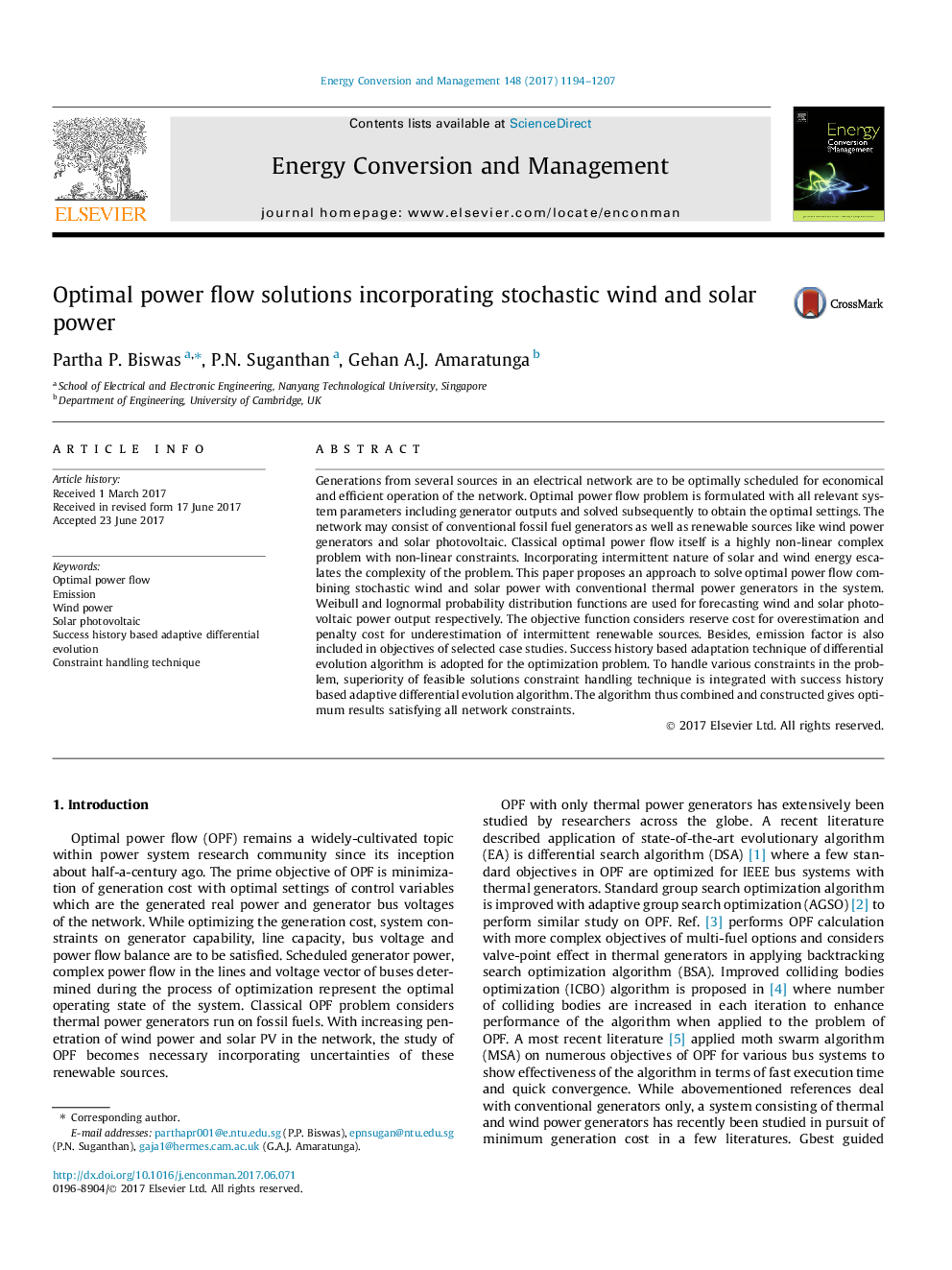| Article ID | Journal | Published Year | Pages | File Type |
|---|---|---|---|---|
| 5012566 | Energy Conversion and Management | 2017 | 14 Pages |
Abstract
Generations from several sources in an electrical network are to be optimally scheduled for economical and efficient operation of the network. Optimal power flow problem is formulated with all relevant system parameters including generator outputs and solved subsequently to obtain the optimal settings. The network may consist of conventional fossil fuel generators as well as renewable sources like wind power generators and solar photovoltaic. Classical optimal power flow itself is a highly non-linear complex problem with non-linear constraints. Incorporating intermittent nature of solar and wind energy escalates the complexity of the problem. This paper proposes an approach to solve optimal power flow combining stochastic wind and solar power with conventional thermal power generators in the system. Weibull and lognormal probability distribution functions are used for forecasting wind and solar photovoltaic power output respectively. The objective function considers reserve cost for overestimation and penalty cost for underestimation of intermittent renewable sources. Besides, emission factor is also included in objectives of selected case studies. Success history based adaptation technique of differential evolution algorithm is adopted for the optimization problem. To handle various constraints in the problem, superiority of feasible solutions constraint handling technique is integrated with success history based adaptive differential evolution algorithm. The algorithm thus combined and constructed gives optimum results satisfying all network constraints.
Related Topics
Physical Sciences and Engineering
Energy
Energy (General)
Authors
Partha P. Biswas, P.N. Suganthan, Gehan A.J. Amaratunga,
